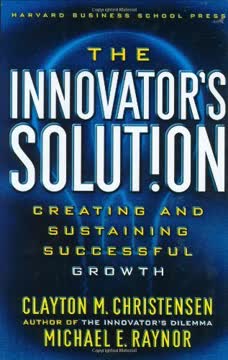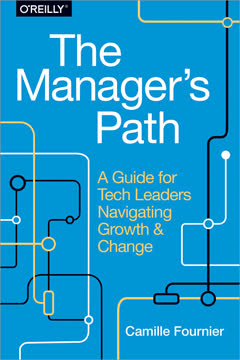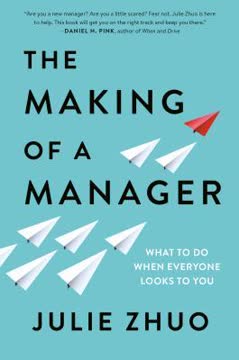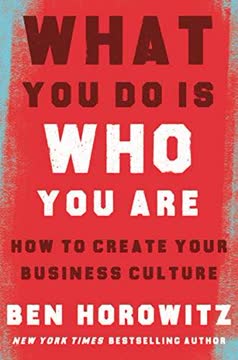Key Takeaways
1. Managerial Output = Team Output: The True Measure of a Manager's Performance
A manager's output = The output of his organization + The output of the neighboring organizations under his influence.
Management is a team sport. The success of a manager is not measured by their individual contributions, but by the collective output of their team and those they influence. This fundamental shift in perspective redefines the manager's role from a doer to an enabler, facilitator, and multiplier of team performance.
Leverage is the key concept. Managers must focus on activities that generate the highest output for their teams. These high-leverage activities include:
- Setting clear objectives and priorities
- Training and developing team members
- Removing obstacles and providing resources
- Fostering collaboration and knowledge sharing
- Making timely decisions that unblock progress
By understanding that their output is the sum of their team's efforts, managers can more effectively allocate their time and energy to activities that truly move the needle on organizational performance.
2. The Breakfast Factory: A Model for Understanding Production Principles
The key idea is that we construct our production flow by starting with the longest (or most difficult, or most sensitive, or most expensive) step and work our way back.
The Breakfast Factory metaphor illustrates fundamental production principles applicable to any process-oriented work. By breaking down the seemingly simple task of preparing breakfast, Grove demonstrates key concepts such as:
- Identifying the limiting step (e.g., boiling an egg)
- Creating time offsets to synchronize parallel processes
- Balancing capacity, manpower, and inventory
- Implementing quality control measures at various stages
These principles extend beyond manufacturing to services, software development, and even administrative tasks. Managers can apply this model to:
- Optimize workflows by identifying and addressing bottlenecks
- Improve resource allocation and scheduling
- Enhance quality control by implementing checks at critical stages
- Increase overall efficiency by streamlining processes
3. Leverage: The Key to Increasing Managerial Productivity
Managerial productivity—that is, the output of a manager per unit of time worked—can be increased in three ways: 1. Increasing the rate with which a manager performs his activities, speeding up his work. 2. Increasing the leverage associated with the various managerial activities. 3. Shifting the mix of a manager's activities from those with lower to those with higher leverage.
Focus on high-leverage activities. Managers should prioritize tasks that have the greatest impact on their team's output. High-leverage activities include:
- Setting clear goals and expectations
- Training and developing team members
- Removing obstacles and providing resources
- Making timely decisions
- Sharing critical information
Minimize low-leverage activities. Conversely, managers should reduce time spent on:
- Micromanaging routine tasks
- Attending unnecessary meetings
- Handling tasks that could be delegated
- Engaging in non-essential administrative work
By consciously shifting their focus to high-leverage activities, managers can dramatically increase their impact and the overall productivity of their teams.
4. Meetings: The Medium of Managerial Work
Thus I will assert again that a meeting is nothing less than the medium through which managerial work is performed.
Meetings are not a necessary evil, but a crucial tool. When properly structured and managed, meetings serve as the primary vehicle for:
- Information exchange
- Decision-making
- Problem-solving
- Team alignment and motivation
Different types of meetings serve different purposes:
- One-on-ones: For individual coaching, feedback, and alignment
- Staff meetings: For team coordination and information sharing
- Operation reviews: For broader organizational alignment and strategy discussions
To maximize meeting effectiveness:
- Have a clear purpose and agenda
- Invite only necessary participants
- Encourage active participation and open discussion
- Document decisions and action items
- Follow up on commitments
By viewing meetings as a critical medium for managerial work, leaders can transform them from time-wasters to powerful drivers of organizational performance.
5. Decision-Making: Balancing Free Discussion with Clear Resolutions
The ideal decision-making process: 1. Free discussion 2. Clear decision 3. Full support
Effective decision-making is a balancing act. It requires creating an environment where diverse opinions are freely expressed, while also ensuring that clear decisions are made and fully supported by the team.
Key elements of effective decision-making:
- Encourage open and honest discussion
- Actively seek out dissenting opinions
- Avoid premature consensus or "groupthink"
- Make clear, timely decisions
- Ensure full support and commitment to implementation, even from those who initially disagreed
Overcome the peer-group syndrome. In groups of peers, there's often a tendency to avoid conflict or defer to the highest-ranking person. To combat this:
- Explicitly encourage dissenting views
- Use techniques like "devil's advocate" to surface potential issues
- Rotate leadership of discussions to prevent dominance by one perspective
By fostering an environment that values both open discussion and decisive action, managers can make better decisions and ensure stronger commitment to their implementation.
6. Planning: Bridging Today's Actions with Tomorrow's Output
I have seen far too many people who upon recognizing today's gap try very hard to determine what decision has to be made to close it. But today's gap represents a failure of planning sometime in the past.
Effective planning is proactive, not reactive. It involves anticipating future needs and taking actions today that will shape tomorrow's outcomes. The planning process should focus on:
- Assessing environmental demands: What will your market, customers, or organization need in the future?
- Evaluating current capabilities: What are your strengths, weaknesses, and ongoing projects?
- Identifying the gap: What's the difference between future demands and current capabilities?
- Creating action plans: What specific steps can you take today to close that gap?
Key planning principles:
- Look beyond immediate problems to address root causes
- Focus on a specific time horizon (e.g., 6-12 months) for actionable plans
- Involve key stakeholders in the planning process
- Regularly review and adjust plans as circumstances change
By shifting focus from firefighting today's problems to proactively shaping tomorrow's outcomes, managers can dramatically improve their organization's performance and adaptability.
7. Hybrid Organizations: Balancing Mission-Oriented and Functional Structures
Grove's Law: All large organizations with a common business purpose end up in a hybrid organizational form.
Hybrid structures combine the best of both worlds. They balance the flexibility and market responsiveness of mission-oriented units with the efficiency and expertise of functional departments.
Key characteristics of hybrid organizations:
- Mission-oriented units (e.g., product divisions) focus on specific markets or customer needs
- Functional departments (e.g., R&D, manufacturing) provide specialized expertise and economies of scale
- Managers must navigate complex reporting relationships and resource allocation decisions
Challenges and solutions in hybrid organizations:
- Information overload: Implement clear communication channels and prioritization systems
- Resource allocation conflicts: Develop transparent processes for allocating shared resources
- Decision-making complexity: Use matrix management and cross-functional teams to balance perspectives
By embracing the hybrid model and actively managing its challenges, organizations can achieve both responsiveness to market needs and operational efficiency.
8. Task-Relevant Maturity: Adapting Management Style to Employee Readiness
The fundamental variable that determines the effective management style is the task-relevant maturity of the subordinate.
One size does not fit all in management. The most effective leadership style depends on the subordinate's task-relevant maturity (TRM), which is a combination of:
- Experience with the specific task
- Overall job knowledge and skills
- Confidence and motivation
Adapting management style to TRM:
- Low TRM: Structured, directive approach with clear instructions
- Medium TRM: More collaborative, with two-way communication and support
- High TRM: Delegative approach, focusing on setting objectives and monitoring results
Key principles for applying TRM:
- Assess TRM for each specific task, not just overall job performance
- Be prepared to shift styles as TRM changes or new tasks are assigned
- Gradually increase autonomy as subordinates demonstrate higher TRM
- Continue monitoring performance to ensure delegation doesn't become abdication
By tailoring their management style to the task-relevant maturity of each team member, leaders can maximize both individual growth and team performance.
9. Performance Reviews: The Manager as Judge, Jury, and Coach
The review is usually dedicated to two things: first, the skill level of the subordinate, to determine what skills are missing and to find ways to remedy that lack; and second, to intensify the subordinate's motivation in order to get him on a higher performance curve for the same skill level.
Performance reviews are a critical managerial tool. They serve multiple purposes:
- Assessing past performance
- Identifying areas for improvement
- Setting future goals and expectations
- Providing motivation and recognition
Key principles for effective performance reviews:
- Be specific and use concrete examples
- Focus on behaviors and outcomes, not personality
- Balance positive feedback with constructive criticism
- Involve the employee in goal-setting and development planning
- Follow up regularly, don't wait for the next formal review
Avoid common pitfalls:
- Recency bias: Focusing only on recent events
- Halo/horn effect: Letting one aspect of performance color the entire evaluation
- Avoiding difficult conversations: Address performance issues directly and constructively
By approaching performance reviews as a collaborative process focused on growth and improvement, managers can transform them from dreaded formalities into powerful tools for individual and organizational development.
10. Motivation: Harnessing the Power of Self-Actualization
Once someone's source of motivation is self-actualization, his drive to perform has no limit.
Understanding the hierarchy of needs is crucial for motivation. Managers should strive to create an environment where employees can move up Maslow's hierarchy to reach self-actualization, the highest level of motivation.
Levels of motivation (from lowest to highest):
- Physiological needs (basic survival)
- Safety and security needs
- Social/affiliation needs
- Esteem and recognition needs
- Self-actualization needs
Strategies for fostering self-actualization:
- Provide challenging, meaningful work
- Offer opportunities for growth and skill development
- Recognize and celebrate achievements
- Encourage autonomy and ownership of projects
- Create a culture that values continuous improvement and personal excellence
By focusing on creating an environment that supports self-actualization, managers can tap into the most powerful and sustainable source of motivation, driving both individual and organizational performance to new heights.
11. Interviewing and Retention: Critical Skills for Building and Maintaining Teams
The purpose of the interview is to: - select a good performer - educate him as to who you and the company are - determine if a mutual match exists - sell him on the job
Effective interviewing is both an art and a science. It requires careful preparation, active listening, and insightful questioning to assess a candidate's potential fit and performance.
Key interviewing strategies:
- Focus on past behavior and accomplishments as predictors of future performance
- Use open-ended questions to encourage detailed responses
- Listen for evidence of skills, values, and cultural fit
- Provide a realistic job preview to ensure mutual understanding
Retention is equally critical to team building. When a valued employee considers leaving:
- Listen actively to understand their motivations and concerns
- Address underlying issues, not just symptoms (e.g., compensation)
- Explore opportunities for growth or change within the organization
- Reinforce the employee's value and impact on the team
By mastering both interviewing and retention skills, managers can build and maintain high-performing teams that drive organizational success.
Last updated:
FAQ
What's High Output Management about?
- Management Principles Focus: High Output Management by Andrew S. Grove centers on effective management techniques, especially for middle managers, emphasizing the understanding of production processes.
- Real-World Applications: The book uses relatable analogies, like preparing breakfast, to explain complex management concepts and improve productivity.
- Team Dynamics: It underscores the importance of teamwork, stating that a manager's output is the output of the organizational units they supervise or influence.
Why should I read High Output Management?
- Timeless Insights: Written in 1983, its principles remain relevant, especially in fast-paced business environments, offering insights applicable across industries.
- Practical Framework: Provides actionable advice on leveraging time, resources, and team dynamics to enhance productivity.
- Expert Perspective: As a former CEO of Intel, Grove shares his extensive experience, making it a valuable resource for both aspiring and current managers.
What are the key takeaways of High Output Management?
- Output-Oriented Management: Emphasizes focusing on team performance, with a manager's output equating to the output of their organization and neighboring organizations.
- Managerial Leverage: Highlights the impact of a manager's actions on their team's output, prioritizing high-leverage activities to enhance productivity.
- Effective Meetings: Advocates for structured, purposeful meetings that facilitate decision-making and information sharing.
What is the concept of "managerial leverage" in High Output Management?
- Definition of Leverage: Managerial leverage is the output generated by specific managerial activities, linking managerial output to organizational output.
- High-Leverage Activities: Activities affecting many people or having long-term impacts, like training, are considered high-leverage.
- Shifting Focus: Managers should prioritize tasks with the highest leverage to maximize effectiveness.
How does Andrew S. Grove suggest managing time effectively in High Output Management?
- Identify Limiting Steps: Focus on the most time-consuming task to optimize workflow and improve efficiency.
- Batch Similar Tasks: Group similar tasks to minimize setup time and increase productivity, reducing fragmentation.
- Use a Calendar Strategically: Plan and allocate time for high-value activities, managing time effectively and avoiding overcommitment.
What is the "black box" concept in High Output Management?
- Definition of the Black Box: Represents the production process where inputs are transformed into outputs, simplifying complex operations.
- Inputs and Outputs: Inputs include resources like raw materials and labor, while outputs are the final products or services.
- Monitoring Performance: Analyzing the black box helps identify inefficiencies and areas for improvement, enhancing productivity.
What does Andrew S. Grove mean by "task-relevant maturity"?
- Definition of Task-Relevant Maturity: Refers to an employee's experience and capability in performing a specific task.
- Impact on Supervision Style: Managers should adjust their supervision style based on the maturity level of their team members.
- Importance of One-on-Ones: Regular meetings assess task-relevant maturity and provide tailored support, aiding employee development.
How does High Output Management define Management by Objectives (MBO)?
- Clear Objectives: MBO focuses on defining clear objectives for individuals and teams, ensuring alignment with organizational goals.
- Key Results: Emphasizes setting measurable key results to track progress and make necessary adjustments.
- Feedback Mechanism: Provides a structured way to give feedback, helping employees understand their performance and areas for improvement.
What is dual reporting, and why is it important according to High Output Management?
- Definition of Dual Reporting: A structure where employees report to two managers—one for functional expertise and another for project oversight.
- Benefits of Dual Reporting: Enhances communication and collaboration, allowing for better resource allocation and problem-solving.
- Challenges: Can create ambiguity in authority and responsibility, requiring clear communication and trust among managers.
What are the modes of control discussed in High Output Management?
- Free-Market Forces: Operates on self-interest, where individuals act based on market dynamics and personal gain.
- Contractual Obligations: Involves formal agreements defining roles, responsibilities, and expectations, ensuring accountability.
- Cultural Values: Emphasizes shared values and trust, fostering a collaborative environment prioritizing group interests.
How does Andrew S. Grove suggest managers motivate their subordinates in High Output Management?
- Create a Supportive Environment: Focus on intrinsic motivation rather than external rewards, allowing motivated individuals to thrive.
- Understand Individual Needs: Tailor the approach to meet specific needs and aspirations, recognizing that motivation varies among individuals.
- Encourage Self-Actualization: Provide opportunities for growth and development, helping employees reach their full potential.
What are some best practices for conducting one-on-one meetings according to High Output Management?
- Preparation is Key: Both manager and subordinate should prepare an agenda, ensuring important topics are covered.
- Focus on the Subordinate: Meetings should be subordinate-driven, empowering employees and encouraging open communication.
- Regular Scheduling: Schedule meetings regularly, adjusting frequency based on task-relevant maturity to maintain alignment and support development.
Review Summary
High Output Management receives mostly positive reviews as a management classic, praised for its practical advice and enduring relevance. Readers appreciate Grove's engineer-like approach to management, focusing on productivity and team output. The book covers topics like meetings, decision-making, and employee motivation. Some criticize its dated examples and lack of emphasis on modern workplace values. Many reviewers, particularly in Silicon Valley, consider it essential reading for managers, though opinions vary on its overall impact and applicability across industries.
Similar Books










Download PDF
Download EPUB
.epub digital book format is ideal for reading ebooks on phones, tablets, and e-readers.





